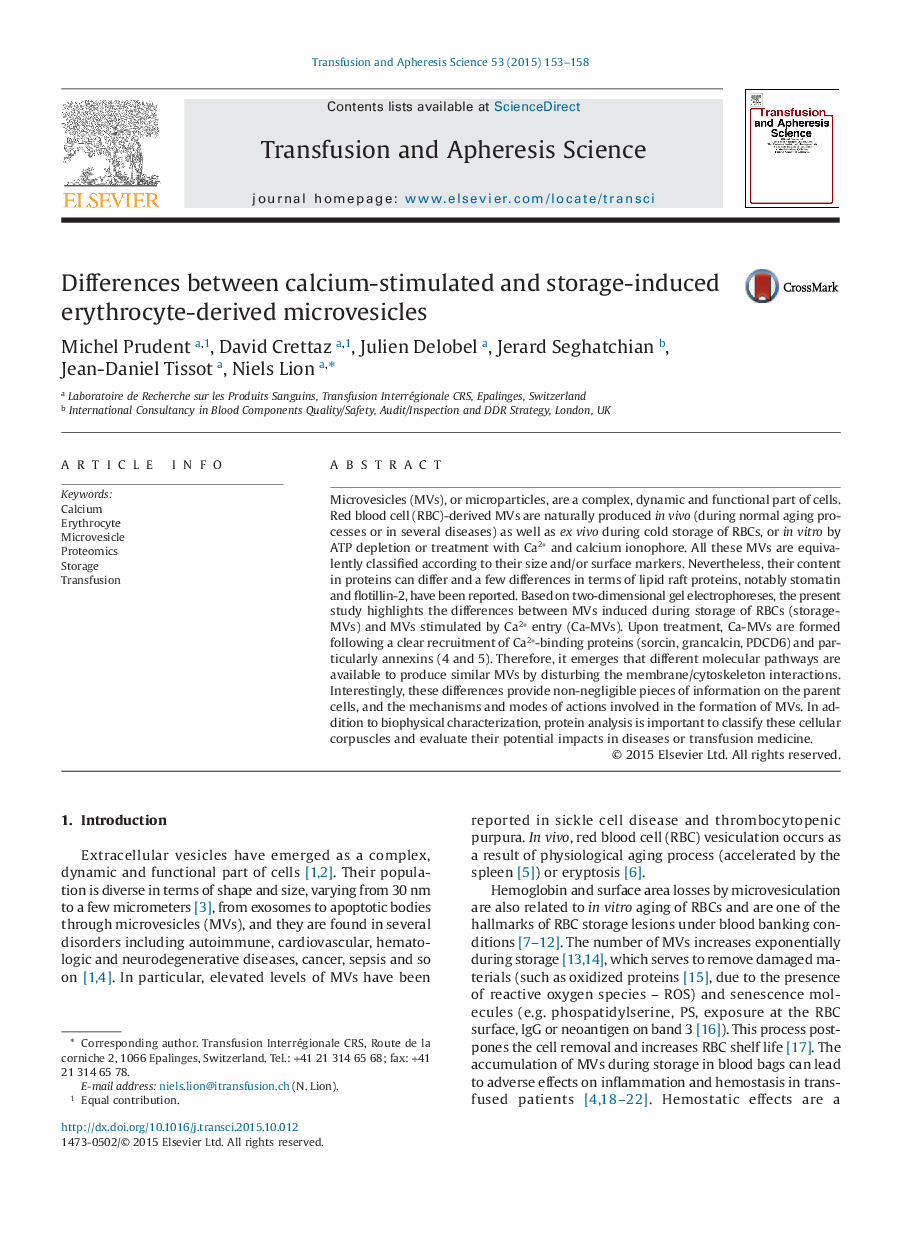| Article ID | Journal | Published Year | Pages | File Type |
|---|---|---|---|---|
| 6113965 | Transfusion and Apheresis Science | 2015 | 6 Pages |
Abstract
Microvesicles (MVs), or microparticles, are a complex, dynamic and functional part of cells. Red blood cell (RBC)-derived MVs are naturally produced in vivo (during normal aging processes or in several diseases) as well as ex vivo during cold storage of RBCs, or in vitro by ATP depletion or treatment with Ca2+ and calcium ionophore. All these MVs are equivalently classified according to their size and/or surface markers. Nevertheless, their content in proteins can differ and a few differences in terms of lipid raft proteins, notably stomatin and flotillin-2, have been reported. Based on two-dimensional gel electrophoreses, the present study highlights the differences between MVs induced during storage of RBCs (storage-MVs) and MVs stimulated by Ca2+ entry (Ca-MVs). Upon treatment, Ca-MVs are formed following a clear recruitment of Ca2+-binding proteins (sorcin, grancalcin, PDCD6) and particularly annexins (4 and 5). Therefore, it emerges that different molecular pathways are available to produce similar MVs by disturbing the membrane/cytoskeleton interactions. Interestingly, these differences provide non-negligible pieces of information on the parent cells, and the mechanisms and modes of actions involved in the formation of MVs. In addition to biophysical characterization, protein analysis is important to classify these cellular corpuscles and evaluate their potential impacts in diseases or transfusion medicine.
Related Topics
Health Sciences
Medicine and Dentistry
Hematology
Authors
Michel Prudent, David Crettaz, Julien Delobel, Jerard Seghatchian, Jean-Daniel Tissot, Niels Lion,
